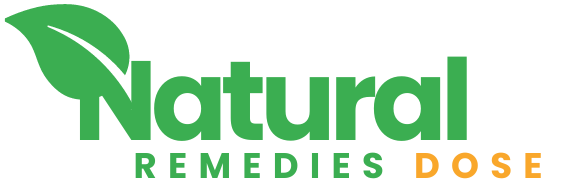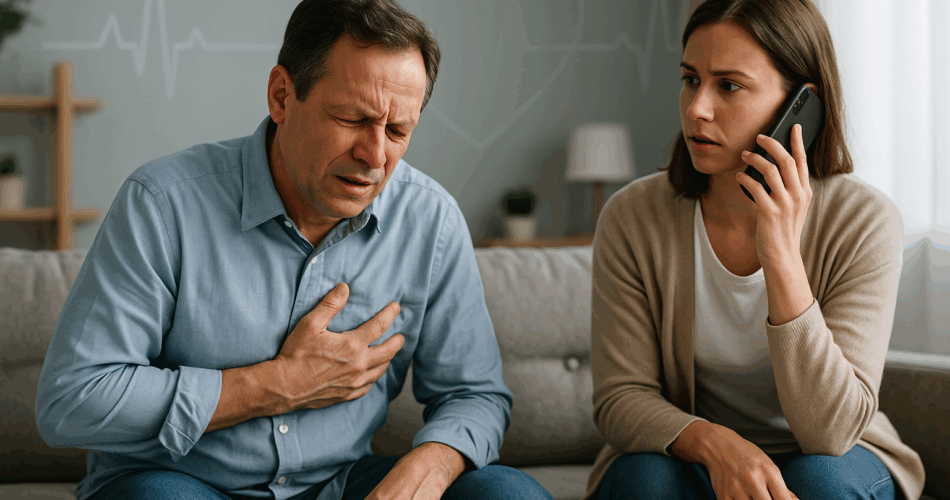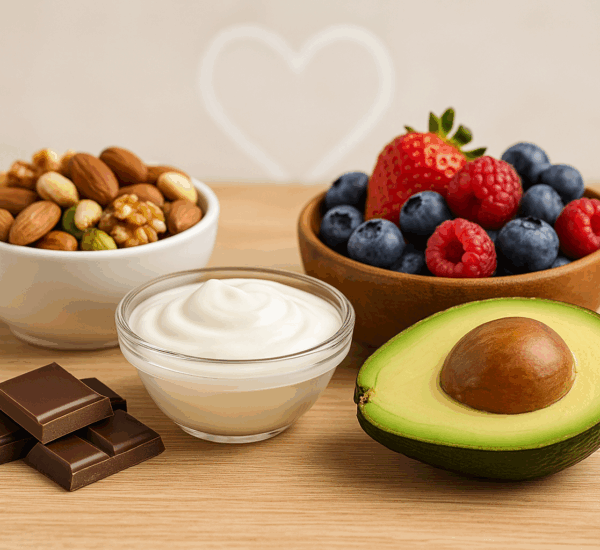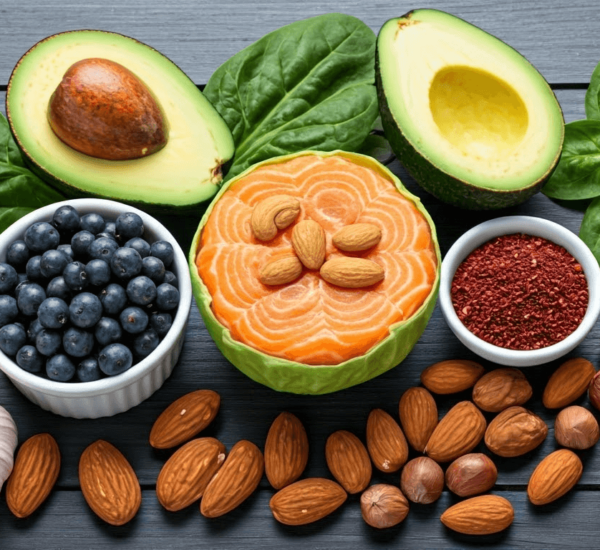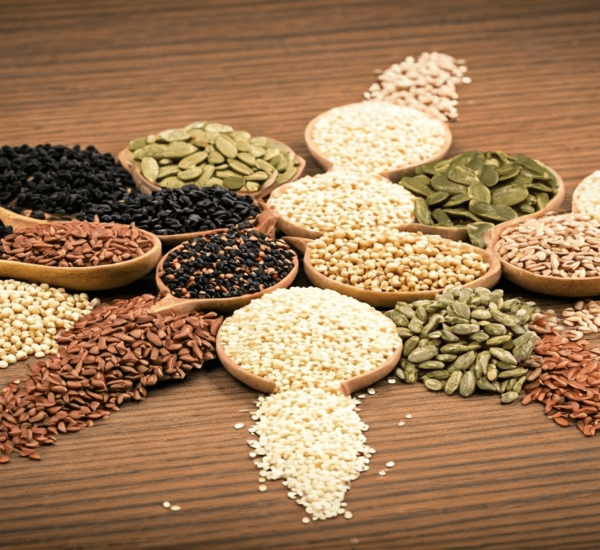Rapid action saves heart muscle and lives. This guide presents practical, neutral, step-by-step actions aligned with a “Natural Remedies Dose” perspective—prioritizing safe, evidence-aligned home steps while emphasizing that professional medical care is non-negotiable in suspected heart attack.
Understanding Heart Attack Warning Signs
Classic Symptoms (Chest, Arm, Jaw, Back)
- Central chest pressure, squeezing, heaviness, or burning that lasts more than a few minutes or comes and goes.
- Pain may radiate to the left or right arm, jaw, neck, back, or upper abdomen.
- Associated signs: cold sweat, shortness of breath, nausea/vomiting, lightheadedness.
Atypical Symptoms (Women, Older Adults, Diabetes)
- Shortness of breath without chest pain, unusual fatigue, faintness, indigestion-like pressure, or back/jaw discomfort.
- People with diabetes may experience muted or atypical pain; staying alert to breathlessness, sweating, and sudden fatigue is vital.
Why “Minutes = Muscle”
A heart attack is commonly triggered by a blocked coronary artery. The longer the heart muscle is starved of oxygen, the greater the damage. Every minute can influence survival and recovery quality.
Step 1: Call Emergency Services Immediately
Core Action: At the first suspicion of a heart attack, call emergency services (e.g., 911/112/999) before doing anything else.
How to make the call count
- State the emergency: “Chest pain; possible heart attack.”
- Give location clearly and any gate codes or landmarks.
- Describe symptoms and timing.
- Stay on the line; follow dispatcher instructions (they can coach CPR).
If alone vs. with someone
- Alone: Put the phone on speaker, unlock the door, and sit near the entrance if possible.
- With someone: One person calls; the other prepares for CPR/AED and gathers medications.
Pros
- Fastest path to lifesaving treatments (ECG, clot-busting meds, urgent procedures).
- Professional guidance immediately via phone.
Cons
- None. There is no downside to calling in suspected heart attack.
Step 2: Chew an Aspirin (When Appropriate)
Only if not allergic, not actively bleeding, not on certain anticoagulants, and not previously advised to avoid aspirin. When in doubt, ask the dispatcher.
Dosage & Timing
- Chew a 160–325 mg regular (non-enteric-coated) aspirin right after calling emergency services. Chewing speeds absorption.
When to Avoid Aspirin
- History of aspirin allergy, asthma triggered by NSAIDs, active gastrointestinal bleeding, major bleeding disorders, or if a clinician has explicitly told the person to avoid aspirin.
- If already on potent anticoagulants, follow medical advice; ask the dispatcher.
Pros
- May limit clot growth and improve outcomes.
- Usually readily available at home.
Cons
- Bleeding risk in inappropriate candidates.
- Stomach irritation in some people.
Quick Tip: If only baby aspirin (81 mg) is available, some protocols suggest 2–4 tablets chewed to reach a similar total dose—provided no contraindications exist.
Step 3: Rest Position & Breathing
The “W” Position (Half-Sitting)
- Sit half-upright with back supported (e.g., against cushions), knees bent, feet on the floor.
- Loosen tight clothing; avoid lying flat if short of breath.
Calm Breathing Cues
- Breathe slowly through the nose and out through the mouth (count 4 in, 4 out).
- Minimize movement; keep conversations short.
Pros
- Reduces cardiac workload and eases breathlessness.
- Simple, no equipment needed.
Cons
- Not a definitive treatment—supportive only until professionals arrive.
Step 4: Use Prescribed Nitroglycerin (If You Have It)
Nitroglycerin is for people who have it prescribed for chest pain/angina. Do not borrow someone else’s medication.
How to Take It Safely
- Sublingual tablet or spray under the tongue.
- If pain persists and blood pressure is not low, follow the prescription label (often 1 dose every 5 minutes, up to 3 total), unless emergency personnel advise otherwise.
Important Safety Rules
- Do not take if you used PDE-5 inhibitors (erectile-dysfunction meds such as sildenafil/tadalafil) in the past 24–48 hours—dangerous blood pressure drops can occur.
- Sit down before using to avoid dizziness/fainting.
- If chest pain resolves and returns, tell paramedics exactly when and how many doses were used.
Pros
- Can relieve ischemic chest discomfort quickly.
- Familiar to those already prescribed it.
Cons
- Can cause headache, dizziness, or low blood pressure.
- Not helpful and potentially risky if not indicated.
Step 5: Prepare for CPR & AED
Hands-Only CPR Essentials
If the person becomes unresponsive and is not breathing normally:
- Call emergency services (or have someone do it).
- Begin hands-only CPR:
- Push hard and fast in the center of the chest at 100–120 compressions per minute (think of the beat of a fast song).
- Depth: about 2 inches (5–6 cm); allow full chest recoil.
- Do not stop until help arrives or an AED instructs otherwise.
How to Use an AED
- Turn it on; follow the voice prompts.
- Attach pads to bare chest as shown on pad diagrams.
- Ensure no one is touching the person during analysis and shocks.
- Resume compressions immediately after a shock or “no shock advised.”
Pros
- Early CPR/AED doubles or triples survival in sudden cardiac arrest scenarios.
- AEDs are user-friendly and widely available in public spaces.
Cons
- Requires immediate action and composure under stress.
- Home AEDs may not be present (consider for high-risk households after medical consultation).
What Not to Do
- Do not drive yourself to the hospital; symptoms can worsen suddenly.
- Do not delay by waiting to “see if it passes.”
- Do not take ibuprofen or other NSAIDs for chest pain—not appropriate in suspected heart attack.
- Do not rely on herbal teas, oils, or home remedies for acute treatment.
- Do not use the internet for troubleshooting during an emergency—call immediately.
Myths to Ignore (e.g., “Cough CPR”)
Cough CPR is not recommended for laypeople in real-world emergencies. It is a clinical technique used in specific monitored situations, not a home strategy for suspected heart attack.
Natural Remedies Dose Perspective (Prevention-Focused)
Important: The steps above address the emergency. Natural strategies shine in prevention and recovery, not in the acute moment.
Food-First Strategies
- Mediterranean-style pattern: Vegetables, legumes, nuts, extra-virgin olive oil, whole grains, fish.
- Omega-3 sources: Fatty fish (salmon, sardines) 2–3×/week; plant sources (chia, flax, walnuts).
- Nitrate-rich produce: Beets, leafy greens—support circulation and endothelial function.
- Fiber focus: Oats, beans, berries—support cholesterol and glucose control.
- Sodium & sugar awareness: Lower ultra-processed foods; aim for home-cooked meals.
Pros
- Broad cardiometabolic benefits; aligns with weight, BP, lipids, and blood sugar goals.
- Compatible with diverse culinary traditions.
Cons
- Requires consistent planning and habit change; results accrue over time, not instantly.
Daily Lifestyle Habits
- Walking habit: 30 minutes daily or in short bouts; add light resistance training.
- Sleep hygiene: 7–9 hours; poor sleep raises BP and stress hormones.
- Stress regulation: Breathwork, nature breaks, or brief mindfulness sessions.
- Smoking cessation & alcohol limits: Critical for vascular health.
Pros
- Multisystem benefits; low-cost.
- Scales from small daily steps to structured programs.
Cons
- Behavior change can be challenging without support/accountability.
Supplement Considerations (With Clinician Input)
- Omega-3 (EPA/DHA) for triglycerides.
- Magnesium (if low) for rhythm and BP support.
- CoQ10 adjunct in selected cases (e.g., statin users), per clinician advice.
- Vitamin D if deficient.
Pros
- Targeted support in documented deficiencies or specific lipid concerns.
Cons
- Not substitutes for medications when indicated; potential interactions with heart meds and bleeding risk with some supplements (e.g., high-dose omega-3). Always coordinate with a healthcare professional.
Sample 7-Day Heart-Smart Reset (Prevention)
A simple rhythm to reinforce recovery and prevention after medical clearance.
H4: Daily Pillars
- Move: 20–30 minutes of brisk walking + 5–10 minutes of gentle strength.
- Meals: Colorful plate (½ veggies), lean protein, whole-grain or bean, healthy fat.
- Moments: 5 minutes of breathwork twice daily.
- Metrics: Track BP, pulse, and symptom notes if advised.
H4: Example Day
- Breakfast: Oatmeal with walnuts, berries; green tea.
- Lunch: Lentil-veggie bowl with olive oil-lemon dressing.
- Snack: Apple + handful of almonds.
- Dinner: Baked salmon, quinoa, roasted greens.
- Wind-down: Light stretch + 5-minute nasal breathing.
Home Emergency Kit for the Heart
Stock List
- Aspirin (regular, non-enteric) with clear label and checklist for who should not use it.
- Personal medications (e.g., nitroglycerin, if prescribed).
- Automatic BP cuff and pulse oximeter (optional, if advised).
- ICE card (In Case of Emergency): diagnoses, medications, allergies, contacts.
- Phone numbers posted visibly; visible house numbers for responders.
- AED (consider for high-risk households after clinician discussion).
Pros
- Reduces panic; enables faster, safer decisions.
- Encourages household readiness and shared knowledge.
Cons
- Upfront cost (especially AED).
- Requires periodic checks for expiry and battery status.
When Symptoms Settle—What Next?
Even if discomfort improves, a heart attack may still be evolving. After urgent care:
- Request and keep copies of ECG, labs, imaging, and discharge instructions.
- Clarify medication plan (dosages, timing, side effects).
- Ask about cardiac rehab, nutrition support, and physical activity clearance.
- Schedule follow-up within the recommended window.
Pros and Cons Summary (Bullet Style)
Pros of the 5-Step Approach
- Evidence-aligned sequence that prioritizes calling professionals.
- Low-cost, actionable steps (call, positioning, aspirin when appropriate).
- Integrates CPR/AED readiness for worst-case scenarios.
- Respects a Natural Remedies Dose philosophy by separating acute care from prevention.
Cons and Cautions
- Aspirin/nitroglycerin carry specific risks; not for everyone.
- Home steps are supportive, not curative; delays in professional care are dangerous.
- CPR/AED require practice and composure; consider formal training.
- Natural remedies are preventive—not treatments for an active heart attack.
Safety Note
This content is informational and does not replace medical advice. In any suspected heart attack, call emergency services immediately and follow professional instructions.
A Safer Tomorrow: Put Readiness on Autopilot (Conclusion)
A heart attack at home demands calm, rapid, and structured action. The safest path starts with calling emergency services, then chewing appropriate aspirin, positioning for comfort, using prescribed nitroglycerin if available, and preparing for CPR/AED if needed. Everything else—including diet, lifestyle, and supplements—fits into the prevention and recovery lane, not the emergency lane. With a stocked kit, a practiced plan, and the right daily habits, households can reduce risk today and build resilience for tomorrow.
FAQs
1) Can herbal teas or essential oils stop a heart attack?
No. They are not appropriate for acute treatment. In a suspected heart attack, call emergency services immediately and follow the 5 steps outlined.
2) If chest pain goes away after resting, is it still an emergency?
Yes—it can be. Intermittent or transient symptoms may still signal a dangerous blockage. Seek medical evaluation promptly.
3) Should a person take ibuprofen for chest pain?
No. Ibuprofen (and many other NSAIDs) are not recommended in suspected heart attack. If appropriate for the individual, chewed aspirin is preferred—only when not contraindicated.
4) Is “cough CPR” valid at home?
No. “Cough CPR” is a myth for layperson use. If someone collapses and isn’t breathing normally, start hands-only CPR and use an AED if available.
5) How can families prepare in advance?
Create a visible plan: post emergency numbers, stock appropriate aspirin, keep prescribed meds accessible, maintain an ICE card, consider CPR/AED training, and ensure house numbers are easy to spot.
